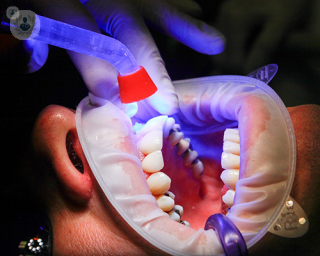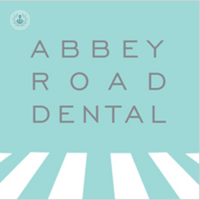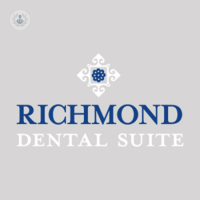What is complex restorative dentistry?
Complex restorative dentistry goes beyond the straightforward teeth whitening of aesthetic dentistry, using a combination of crowns, veneers, implants and bridges to improve the appearance of your teeth.
Complex teeth restorations are performed when the teeth have lost their natural structure and strength. Crowns can provide structural support, precious metal substructures can be used to reinforce crowns if needed, and bridges can provide a replacement for lost teeth. If teeth are particularly damaged, ceramic restorations and the use of veneers can be considered.

Why is it done?
Complex restorative dentistry is needed when a patient presents with teeth that are decayed, defective, damaged, or missing altogether. These types of restorations are not considered cosmetic but are needed to restore oral health and to prevent further disease.
Having complex restorative dentistry can give patients the following:
- Better oral health
- Improve function when chewing and biting
- Less pain and sensitivity
- A more attractive smile
- Avoid permanent dental damage
The following dental problems can be treated with complex restorative dentistry:
- Enamel erosion (this can result from acid reflux and TMJ disorder)
- Decayed teeth
- Root canal infections
- Cracked teeth
- Bruxism (this results from teeth grinding which is common when some people are asleep)
- Missing teeth
- Misshapen teeth
- Teeth that are too widely spaced
- Badly stained teeth
What does it involve?
There is a range of treatments that can be used for complex dental restoration. These include:
- Bridges
- Dental implants
- Crowns
- Veneers (porcelain or composite)
- Porcelain inlays and onlays
- Fillings
- Composite bonding
- Dentures (this is usually a final option for dentists)
How do you prepare for complex restorative dentistry?
Depending on the methods of restoration being used, you may require anaesthesia for the procedure. Sometimes it will be necessary to have oral surgery before your dental restoration is performed, and this will have its own preparatory measures and recovery period to manage.
Aftercare
Immediately following your restoration, you may have to avoid certain foods and drinks temporarily, such as ice cold or fizzy drinks and hard, chewy foods. Crowns, bridges and implants are not expected to last a lifetime, but with thorough dental care, the results of your dental restoration should last a longer amount of time before any replacements are needed.
07-03-2018 11-02-2023Complex restorative dentistry
What is complex restorative dentistry?
Complex restorative dentistry goes beyond the straightforward teeth whitening of aesthetic dentistry, using a combination of crowns, veneers, implants and bridges to improve the appearance of your teeth.
Complex teeth restorations are performed when the teeth have lost their natural structure and strength. Crowns can provide structural support, precious metal substructures can be used to reinforce crowns if needed, and bridges can provide a replacement for lost teeth. If teeth are particularly damaged, ceramic restorations and the use of veneers can be considered.

Why is it done?
Complex restorative dentistry is needed when a patient presents with teeth that are decayed, defective, damaged, or missing altogether. These types of restorations are not considered cosmetic but are needed to restore oral health and to prevent further disease.
Having complex restorative dentistry can give patients the following:
- Better oral health
- Improve function when chewing and biting
- Less pain and sensitivity
- A more attractive smile
- Avoid permanent dental damage
The following dental problems can be treated with complex restorative dentistry:
- Enamel erosion (this can result from acid reflux and TMJ disorder)
- Decayed teeth
- Root canal infections
- Cracked teeth
- Bruxism (this results from teeth grinding which is common when some people are asleep)
- Missing teeth
- Misshapen teeth
- Teeth that are too widely spaced
- Badly stained teeth
What does it involve?
There is a range of treatments that can be used for complex dental restoration. These include:
- Bridges
- Dental implants
- Crowns
- Veneers (porcelain or composite)
- Porcelain inlays and onlays
- Fillings
- Composite bonding
- Dentures (this is usually a final option for dentists)
How do you prepare for complex restorative dentistry?
Depending on the methods of restoration being used, you may require anaesthesia for the procedure. Sometimes it will be necessary to have oral surgery before your dental restoration is performed, and this will have its own preparatory measures and recovery period to manage.
Aftercare
Immediately following your restoration, you may have to avoid certain foods and drinks temporarily, such as ice cold or fizzy drinks and hard, chewy foods. Crowns, bridges and implants are not expected to last a lifetime, but with thorough dental care, the results of your dental restoration should last a longer amount of time before any replacements are needed.


Crowns, dentures, implants... what exactly is complex restorative dentistry?
By Dr David Bloom
2024-11-11
Keeping your teeth in tip top condition can be key to a great smile. But sometimes, this involves a wide range of comprehensive treatments known as complex restorative dentistry. In this article, Dr David Bloom, talks us through what exactly complex restorative dentistry is and the type of treatments it might involve. See more
Experts in Complex restorative dentistry
-
Dr David Bloom
DentistryExpert in:
- Cosmetic dentistry (aesthetic dentistry)
- Smile design
- Veneers
- Orthodontics
- Dental implants
- Complex restorative dentistry
-
Dr Damien McLaughlin
DentistryExpert in:
- Cosmetic dentistry (aesthetic dentistry)
- Veneers
- Complex restorative dentistry
- Smile design
- Lumineers
- Digital dentistry
-
Dr Antimos Ouzounoglou
DentistryExpert in:
- Complex restorative dentistry
- Tooth restoration
- Cosmetic dentistry (aesthetic dentistry)
- Dental phobia
- Composite veneers
-
Dr Amir Mirzaei
DentistryExpert in:
- Complex restorative dentistry
- Cosmetic dentistry (aesthetic dentistry)
- Composite bonding
- Digital dentistry
- Endodontic treatment
- Invisalign
-
Dr Danny Watts
DentistryExpert in:
- Advanced Prosthodontics
- Complex restorative dentistry
- Cosmetic dentistry (aesthetic dentistry)
- Dental crown
- Smile design
- Veneers or crowns
- See all

Harley Street Dental Studio
Harley Street Dental Studio
52 Harley Street, Marylebone. W1G 9PY
No existe teléfono en el centro.
By using the telephone number provided by TOP DOCTORS, you automatically agree to let us use your phone number for statistical and commercial purposes. For further information, read our Privacy Policy
Top Doctors

Abbey Road Dental
Abbey Road Dental
81 Abbey Road
No existe teléfono en el centro.
By using the telephone number provided by TOP DOCTORS, you automatically agree to let us use your phone number for statistical and commercial purposes. For further information, read our Privacy Policy
Top Doctors

Richmond Dental Suite
Richmond Dental Suite
29-31 Heath Rd, Twickenham TW1 4AW
No existe teléfono en el centro.
By using the telephone number provided by TOP DOCTORS, you automatically agree to let us use your phone number for statistical and commercial purposes. For further information, read our Privacy Policy
Top Doctors
-
Harley Street Dental Studio
52 Harley Street, Marylebone. W1G 9PY, W1G Marylebone LondonExpert in:
- Porcelain veneers
- Crowns
- Fillings
- Endodontics
- Cosmetic dentistry
- Dental implants
-
Abbey Road Dental
81 Abbey Road, North LondonExpert in:
- Fillings
- Cosmetic dentistry
- Orthodontics
- Tooth restoration
- Dental therapy
- Cosmetic bonding
-
Richmond Dental Suite
29-31 Heath Rd, Twickenham TW1 4AW, West LondonExpert in:
- Cosmetic dentistry
- Tooth restoration
- See all
- Most viewed diseases, medical tests, and treatments
- Botulinum toxin (Botox™)
- Platelet-rich plasma
- Cleft palate
- Tooth wear
- Tooth sensitivity
- Tooth abscess
- Facial pain
- Dental phobia
- Dental monitoring
- Extraction of teeth







